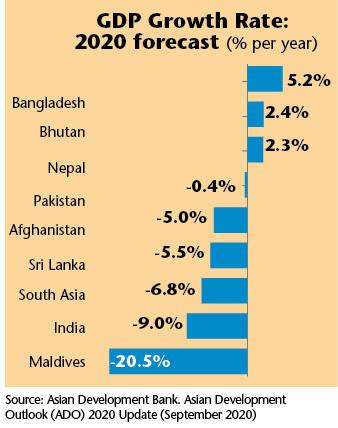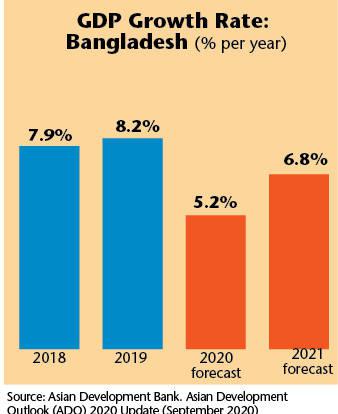-

Also read: How Bangladesh scripted a textile success story
Huge imbalances
In specific terms, a bilateral trade figure of about $10 billion may create the impression that the economic relationship between the two countries has reached some stage and scale in the last five decades, since India has been the second largest trading partner of Bangladesh, after China. But there are huge imbalances.
“Trade between the two countries may not have grown exponentially but it has consistently moved up. However, India enjoys trade surplus of almost 80 per cent and this does not bode well for augmenting the bilateral trade further. To play big brotherly role in the true sense of the term, India must provide more access to imports from Bangladesh,” remarks Ajay Sahai, Director General & CEO, Federation of Indian Exporters Organisation (FIEO). Even in the Corona impacted year, the drop in exports from India to Bangladesh has been marginal – to the tune of 3 per cent, Sahai emphasises.
But the low imports from Bangladesh (just $1 billion plus) is quite surprising, given its current ‘least developed country status’ (slated to go away in 2024), which facilitates zero tariff supply for most of the items (barring those which are in the negative list). “There are examples to show that neighbouring countries can become great trading partners, as historical and cultural similarities often become major binding force. In the case of India-Bangladesh trade, something has happened but yet a lot needs to be done especially in terms of giving a better structural framework to further promote the bilateral trade taking into account Bangladesh’s evolving strongholds,” comments Rakesh Mohan Joshi, professor & chairperson, international collaboration & research, Indian Institute of Foreign Trade (IIFT).
Bangladesh, on its part, has often complained about stringent checking standards, which India adopts on its goods, particularly garments, and has been keen for a bilateral Comprehensive Economic Partnership Agreement (CEPA). A joint study for its formulation and implementation is underway.
“Investment from the Indian private sector in Bangladesh is on the rise,” informs Joshi. “But a more engaging model would be to encourage Indian entrepreneurs to set up units there for items they would wish to import from Bangladesh. The cheaper labour cost there would be a huge advantage”. A balanced and more equal trade relationship will also benefit India and its rising perishable exports, considering the geographical proximity, he emphasises.
Trade, however, alone can’t define the two neighbours, which share nearly 4,000 km of borders at different points. State like Tripura in geographic terms (sharing 70 per cent of its boundary) is much closer to the market in Bangladesh than markets in the rest of India. But there are a host of contentious issues, which remain pending, with some of them appearing out to be too complicated. The illegal migration from Bangladesh to India in the past and present government’s commitment to check this issue through legislative enforcement looms large as a potential spoiler. A latent issue for a long time, it has certainly turned into a more prominent emotive point in the country.
-

Also read: India-Bangladesh: Building bridges and more
The case in point is: the current election campaign in West Bengal, where the challenger BJP is aggressively attacking the present dispensation led by the Trinamool Congress (TMC) for unprecedented minority appeasement, majority of whom are believed to have strong linkage with Bangladesh. And it is this lurking feeling for past several decades, which is counted as a serious deterrent to keeping arrivals of medical tourists from Bangladesh on a lower side, despite India being so close a market for them.
India has also not really emerged as an aspirational educational hotspot for Bangladesh students; in an ideal situation, they should have been looking at finding jobs in India, after completing their studies. Much like it happens in the case of Indian students who go to Europe and the US. Needless to say, despite having strong soft power assets, India has somewhere missed out in harnessing them vis-a-vis Bangladesh, a rising power in South Asia now. Furthermore, the failure to draw an interim framework on Teesta water sharing and six other smaller rivers – Manu, Muhuri, Khowai, Gumti, Dharla and Dudhkumar – continues to remain a major contentious issue.
Promoting trade, investment
The good news is: both the countries, under the stewardship of Prime Minister Modi and Prime Minister Sheikh Hasina, in the recent past have shown strong intent to take the bilateral relationship to the next level – something that is truly befitting to their historical linkage and the newly found status as South Asia’s leading economic magnets. High level meeting at the ministerial or senior official level has become more frequent than ever before, which had resulted in signing of ten MoUs/agreements for co-operation in various sectors – security and border management; defence co-operation; connectivity, commercial and economic; etc – in 2019.
According to a government release, both the governments are undertaking various measures to restore the pre-1965 rail links and other connectivity links that existed between India and Bangladesh. In terms of improving connectivity and harnessing the business potential between the two countries, inland waterways have emerged as a vital cog. The two countries have agreed to expand the scope of new India-Bangladesh Protocol Routes by including Sonamura-Daudkandi on river Gomti and extension of Dhulia to Godagiri up to Aricha on river Padma in the second addendum to the Protocol on Inland Water Transit and Trade (PIWTT).
To promote trade and investment, both the governments have agreed to create an India-Bangladesh CEOs’ Forum, which will provide policy level inputs, India has extended three Lines of Credits (LoC) to Bangladesh in the last eight years, amounting $8 billion for development of infrastructure in various sectors including roads, railways, shipping and ports. “The government of India has also been providing grant assistance to Bangladesh for various infrastructure projects, including construction of Akhaura-Agartala rail link, dredging of inland waterways in Bangladesh and construction of India-Bangladesh Friendship Pipeline 14. Small Development Projects (SDPs) constitute an active pillar of India’s development assistance.
-
The good news is: both the countries, under the stewardship of Prime Minister Modi and Prime Minister Sheikh Hasina, in the recent past have shown strong intent to take the bilateral relationship to the next level – something that is truly befitting to their historical linkage and the newly found status as South Asia’s leading economic magnets
The government of India has funded 55 SDPs, including construction of student hostels, academic buildings, cultural centres and orphanages, etc, in Bangladesh and another 26 SDPs are being implemented,” explained a Ministry of External Affairs (MEA) note released last year. “Various steps taken in the recent years are indicative of the fact that both the governments are serious about creating a more formidable edifice for the better bilateral relationship, where a more progressive and equal bilateral trade regime will come into the play, ” says Sahai of FIEO.
Incidentally, in a virtual summit held in December, which had seen participation of prime ministers of both the countries, Modi had called Bangladesh a ‘key pillar’ of India’s ‘Neighbourhood First’ policy, and Sheikh Hasina had dubbed India a ‘true friend’. And considering the bonhomie the two leaders share, right-minded people on both sides of the border will be eagerly listening to them on 26 March, when probably they share a possible new roadmap to give a new meaning to the tie after 50 years.




































